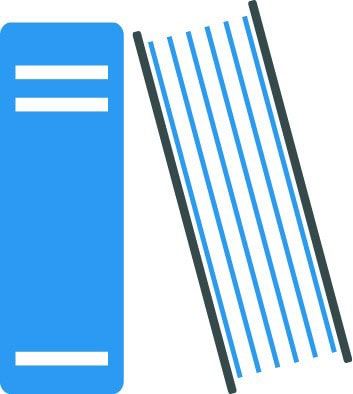123
Instructor’s Guide – A Tale of Two Patients
Overview:
This is a story about how excellence in healthcare delivery requires attending to the needs, wants, feelings, insecurities, and anxieties of each and every patient and their families in addition to treating their medical problem.

Primary Learning Outcomes
After completing this lesson, the student will be able to:
- Explain and adopt the 3Ws when interacting with patients and families.
- Describe the importance of monitoring and modifying staff conversations, actions and norms regarding non-patient centered ‘chit chat’ in the presence of patients and families.
- Explain how to integrate patient and family members in conversations during care transitions (handoffs) whenever practical.

QSEN Pre-Licensure Competencies
The following QSEN competencies are addressed in this lesson:
- Patient-Centered Care: Recognize the patient or designee as the source of control and full partner in providing compassionate and coordinated care based on respect for patient’s preferences, values, and needs.
- Teamwork and Collaboration: Function effectively within nursing and inter-professional teams, fostering open communication, mutual respect, and shared decision-making to achieve quality patient care.

QSEN Teamwork & Collaboration Enrichment
TeamSTEPPS® Best Practice: 3 Ws & Bedside Handoffs
Team Strategies to Enhance Performance and Patient Safety (TeamSTEPPS) is an evidence-based set of teamwork tools, aimed at optimizing patient outcomes by improving communication and teamwork skills among health care professionals.
- 3 Ws- Who I Am, What I am Doing, and Why I Care was originated by the Florida Hospital System as a simple, yet effective way to reliably greet, engage, and activate patients and families
- Bedside Handoffs: Change of shift report occurring at the patient’s bedside with these essential components:
- A standardized nursing report handoff tool
- Bedside shift-to-shift report
- Inclusion of the patient and family in the discussion of plans and goals of care including introductions.
- Two-person medical record check
Reflection Questions:
Students will answer reflection questions upon completing the story. These questions are aligned with the QSEN competencies and are designed to help the student reflect on both the content of the story and the QSEN competencies addressed by the story.
*Following each question are some potential answers
- How did the use of the 3Ws improve Sheila’s experience?
A: She was informed regarding who was present and what to expect. She felt like she was a part of the health care team.
- What effect did the staff conversations, actions, and norms have on Betty’s perception of their competence and her overall impression of the hospital?
A: Betty felt as if she was a nuisance or a problem for the staff. She did not feel involved in her own care. Her husband was also made to feel as if he was in the way.
- How did the use of bedside handoffs at Sheila’s hospital impact her experience?
A: She felt that the staff were interested in her needs and concerns. She also believed they cared about her and her wishes.
Discussion Questions:
Use discussion questions for face to face or online discussion boards to get students to further reflect on the content of the story together.
*Following each question are some potential answers
- What can we learn this story?
A: That patients are always listening, even if we don’t think they are. They are very aware of the attitudes and actions made by the health care team members.
- What one or two things could you personally do to ensure patients feel included and not an object of care?
A: One was is to use the 3W’s and to include the patient in their own care. Patient-centered care means that health care professionals need to keep the patient informed of what they are doing, why they are doing it and that they care.
Suggested Classroom Mastery Activities:
These activities can be tailored for individuals or groups in a face to face or online setting.
- Create a Venn Diagram to compare and contrast Betty and Sheila’s patient care experiences. Write a paragraph to summarize your findings.
- Practice using the 3Ws in a variety of scenarios. Work with a partner to write five short patient care scenarios and explain how you would use the 3Ws to help put the patient at ease.
- Make a poster that could remind you co-workers to focus on patient-centered care. Include some of the techniques from this story that you found useful or effective.

Measuring Student Mastery:
| Learning Outcome |
Level 1 |
Level 2 |
Level 3 |
| Explain and adopt the 3Ws when interacting with patients and families. |
Student struggles to explain and adopt the 3Ws when interacting with patients and families. |
Student can explain some use of the 3Ws when interacting with patients and families, but needs more practice. |
Student can accurately explain and adopt the 3Ws when interacting with patients and families. |
| Describe the importance of monitoring and modifying staff conversations, actions and norms regarding non-patient centered ‘chit chat’ in the presence of patients and families. |
Student struggles to describe the importance of monitoring and modifying staff conversations, actions and norms regarding non-patient centered ‘chit chat’ in the presence of patients and families. |
Student can describe the importance of monitoring and modifying staff conversations, actions and norms regarding non-patient centered ‘chit chat’ in the presence of patients and families, but needs more practice. |
Student can accurately describe the importance of monitoring and modifying staff conversations, actions and norms regarding non-patient centered ‘chit chat’ in the presence of patients and families. |
| Explain how to integrate patient and family members in conversations during care transitions (handoffs) whenever practical. |
Student struggles to explain how to integrate patient and family members in conversations during care transitions (handoffs) whenever practical. |
Student can explain how to integrate patient and family members in conversations during care transitions (handoffs) whenever practical, but needs more practice. |
Student can explain how to integrate patient and family members in conversations during care transitions (handoffs) whenever practical. |
For additional information on improving team communication, please consult the following articles and resources in Further Reading:

Story-Specific Best Practices and Proven Tools:
In addition to the ideas generated by students and mentioned in the activities, there are established best practices that may be appropriate to introduce or reference during this lesson to support communication. Some best practices to consider for improving team communication include:
- 3Ws- Who I Am, What I am Doing, and Why I Care
- Bedside Handoffs






